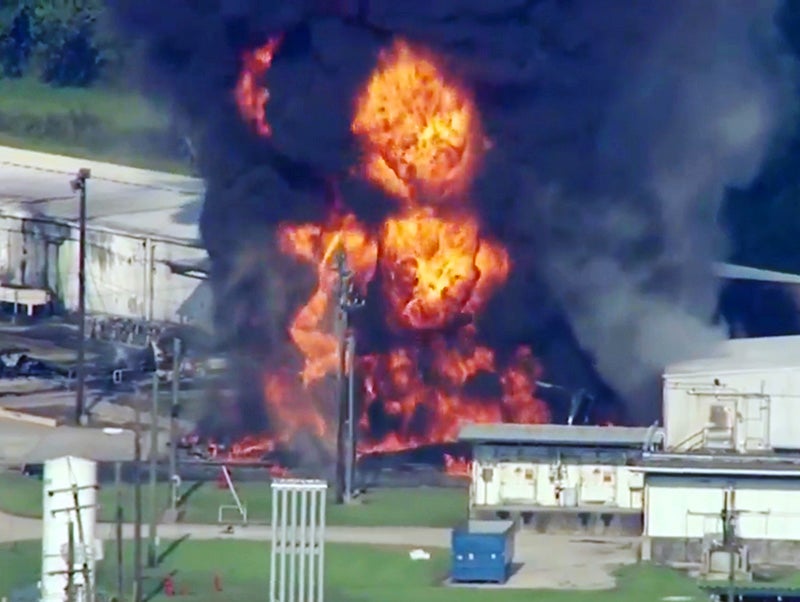Another Year of Preventable Chemical Disasters
Report gives a snapshot of how delaying the Chemical Disaster Rule hurts communities & families
Contact
Today, community, environmental, health, workers, and scientist groups released a report highlighting how Environmental Protection Agency (EPA) Administrator Scott Pruitt’s prolonged delay of the Chemical Disaster Rule continues to hurt families. The one-year review spotlights some of the serious chemical incidents that have occurred while the rule has been on hold over the last year. The rule would have begun to prevent and reduce chemical disasters in communities near over 12,500 facilities nationwide if the Trump Administration had not abruptly suspended it one year ago, in March 2017.
Courtesy of WTNH
Baton Rouge, Louisiana: Fire at the ExxonMobil Refinery on Nov. 1, 2017. See timeline of publicly known incidents.
The report outlines dozens of examples of chemical disasters that have occurred since the rule was first delayed, including the Arkema explosion that took place in Texas in August 2017 and the ExxonMobil Refinery fire in Louisiana in November 2017. The report also details the personal accounts of those who found themselves in harm’s way, but as local communities often do not receive complete or timely information regarding the flames they see and odors they smell coming from oil refineries and other chemical facilities, these incidents provide only part of the picture. No comprehensive list is available of all of the incidents or resulting harm that have occurred at covered facilities during the delay in part because EPA has not released such a list.
The EPA reports that about 177 million Americans live in the worst-case scenario zones for chemical disasters. At least one in three schoolchildren attends a school within the vulnerability zone of a hazardous facility, as well. The percentage of Blacks living in fenceline zones around 3,433 of the most dangerous facilities is 75% greater than for the U.S. as a whole, and the percentage of Latinos in these zones is 60% greater.
U.S. Environmental Protection Agency Data
The 2,291 chemical incidents between 2004 and 2013 happened throughout the country. See larger map.
The Chemical Disaster Rule includes much-needed improvements to the EPA’s Clean Air Act Risk Management Program (RMP) and would prevent and reduce chemical disasters, hazardous releases and resulting chemical exposures, while strengthening emergency preparedness and coordination with local first responders. When developing the rule, the EPA determined that prior protections failed to prevent over 2,200 chemical accidents around the country during a 10-year period, including about 150 incidents per year that caused reportable harm.
The frequency of toxic releases and constant threat of fires and explosions increase even more during hurricane season in the Gulf, where there is a large concentration of oil refineries and chemical facilities. Many of these reported toxic releases and other safety problems during Hurricane Harvey in August. The next hurricane season is scheduled to begin in the Gulf and Atlantic Ocean on June 1, 2018, according to the National Oceanic and Atmospheric Administration’s National Hurricane Center, but the Chemical Disaster Rule remains delayed.
This report was released in partnership with BlueGreen Alliance, Coalition For A Safe Environment, Community In-Power & Development Association, Coming Clean, Earthjustice, Environmental Justice Health Alliance, Ohio Valley Environmental Coalition, Texas Environmental Justice Advocacy Services, Union of Concerned Scientists and California Communities Against Toxics.

Additional Resources
About Earthjustice
Earthjustice is the premier nonprofit environmental law organization. We wield the power of law and the strength of partnership to protect people's health, to preserve magnificent places and wildlife, to advance clean energy, and to combat climate change. We are here because the earth needs a good lawyer.